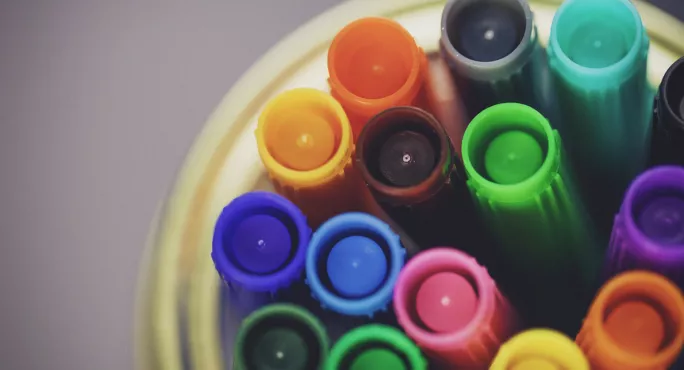6 steps to get students self-marking

Marking takes up a lot of teachers’ time - we all know this well.
But there is no escaping it, right? Students submit work, we mark it and offer feedback - it’s how it’s always been and it’s what works best, right?
Well, yes and no. Research has actually indicated that getting students to self- or peer-assess is something we should be doing. More specifically, a meta-analysis of 54 studies indicates that peer assessment improves academic performance more than teacher assessment.
What does that mean? It means that we should put more emphasis on students marking their own work or that of their peers than on us, the teachers.
Don’t get me wrong. I am not making some outlandish case against feedback; feedback is an essential part of the learning process. Once the students have marked their work, I check it over to see if they are finding key mistakes and taking it seriously, but it still reduces my marking time by about 75 per cent.
How to get students self-marking
So, how do you ensure you do it well? Here are six steps to roll out self or peer-marking:
1. Start simple
Throwing your class in at the deep end and expecting them to do a deep marking of their work on day one is almost certainly a bad idea. They need to develop this ability like they do all of their other skills.
Never having them check for more than one or two things has worked best for me. Keep it focused, or it is easy for them to feel overwhelmed and simply get it all wrong.
When I first started this with my class, I only let them check for spellings. This is a very structured and controlled method of self-marking.
I first did this with spelling tests and then introduced it into their story-writing lessons. I had some “challenge” adjectives on the board for them to use. Once they had written their story, they needed to take a green pen, find the challenge adjectives and mark the spelling of these words.
At first, they all just ticked these words without checking. Once I told them I would reward them (see step 3), most of them got most of them right.
From there, I have had them check for correct punctuation and we have checked research that they have done during multidisciplinary learning lessons and maths.
2. Give them a clear model
You need to make sure they understand how to do this by giving them a clear model to follow as you do not want them going wild with huge green ticks that take over their page.
During the story-writing lesson, I demonstrated my own checking of the challenge adjectives. I purposefully had a spelling mistake so I could show them how to make a correction.
It is extremely important that you walk around the class and monitor the students as they do this, providing guidance as needed.
3. Reward students for finding mistakes
This works as a double win. First of all, it tells the students that making mistakes can be a positive and productive process as opposed to a self-deprecating one.
Second, it actually motivates the students to find the mistakes, instead of simply glancing at their work, putting some ticks on the page and saying they are finished.
I typically use positive verbal feedback for this but have, from time to time, given positive points.
4. Explain why they are doing it
Context is essential. It remains true even when students are marking their own work. This is an easy one to explain to them.
I simply told my students that when we looked at students who did this and compared their grades with students who didn’t, the students who did this got higher grades and learned more.
5. Build self or peer assessment into your lessons
Feedback is typically best when it is as real-time as possible. For this reason, you should plan the self or peer assessment and build it into your lesson. This can be as short as allowing three minutes for checking simple things like spelling, grammar, gap-fill activities and the answering of simple questions, or it can be longer if you are doing deep reflections on work with goal-setting aspects.
This has become a nice little routine for my class and they do it effortlessly now. It has worked best for me at the end of my lessons as a short five-minute marking of the simple things mentioned above.
6. Let students take ownership
I recently did a routine spelling test. Afterwards, the students got rid of their pencils and all looked intensely at me, waiting for me to hand out the green marking pens.
When they marked their spellings, some of them had (on their own), decided to give themselves 20 corrections for each spelling mistake.
This is the kind of ownership and desire to improve that we need to embed in our students.
Rather than taking pride in working as hard as possible to just meet the standards, let’s take pride in working smart and building learners who can take responsibility.
You need a Tes subscription to read this article
Subscribe now to read this article and get other subscriber-only content:
- Unlimited access to all Tes magazine content
- Exclusive subscriber-only stories
- Award-winning email newsletters
Already a subscriber? Log in
You need a subscription to read this article
Subscribe now to read this article and get other subscriber-only content, including:
- Unlimited access to all Tes magazine content
- Exclusive subscriber-only stories
- Award-winning email newsletters